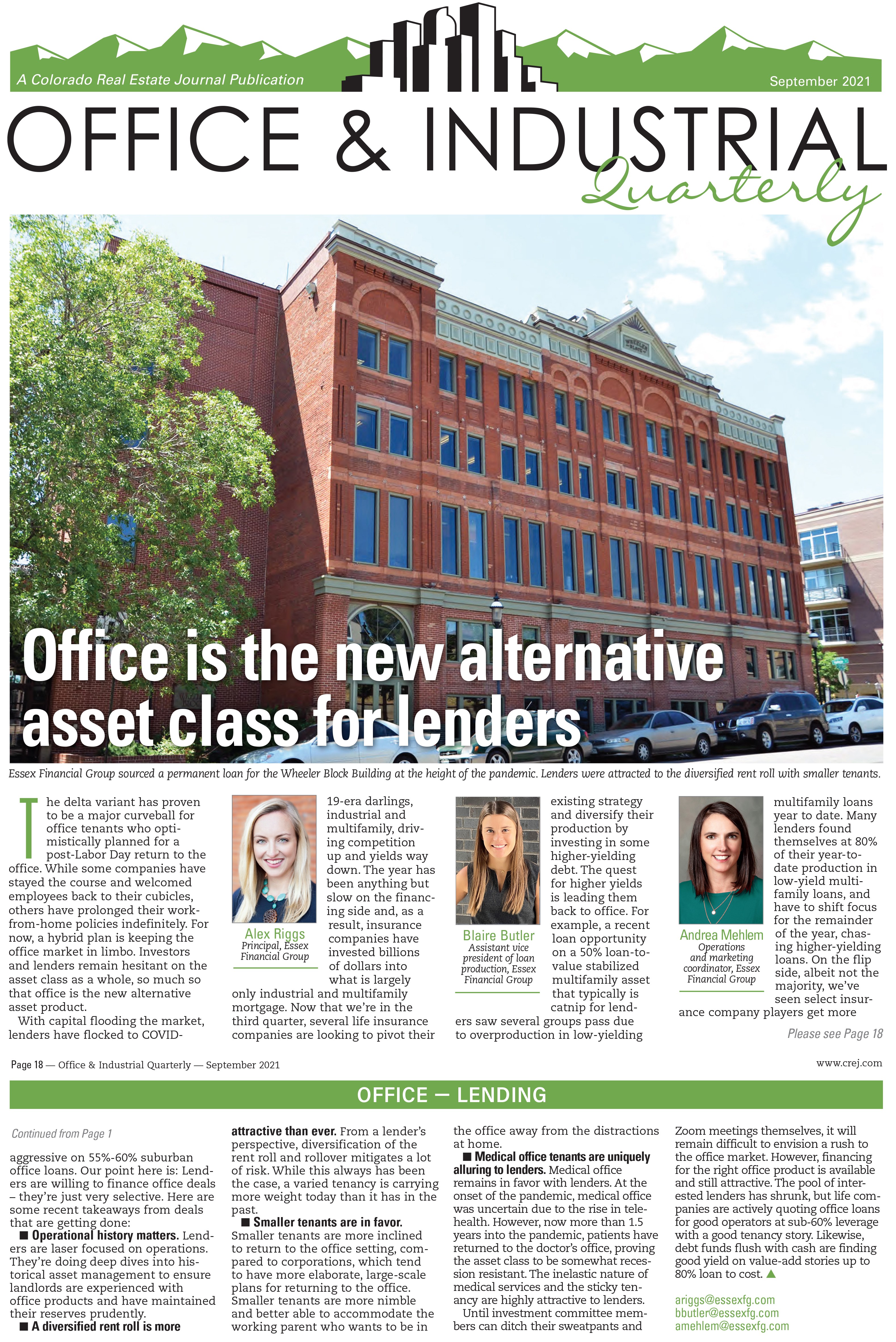Featured in the Colorado Real Estate Journal's Office & Industrial Quarterly
The delta variant has proven to be a major curveball for office tenants who optimistically planned for a post-Labor Day return to the office. While some companies have stayed the course and welcomed employees back to their cubicles, others have prolonged their work-from-home policies indefinitely. For now, a hybrid plan is keeping the office market in limbo. Investors and lenders remain hesitant on the asset class as a whole, so much so that office is the new alternative asset product.
With capital flooding the market,
lenders have flocked to COVID-19-era darlings,
industrial and
multifamily, driving competition
up and yields way
down. The year has
been anything but
slow on the financing side and, as a
result, insurance
companies have
invested billions
of dollars into
what is largely
only industrial and multifamily
mortgage. Now that we’re in the
third quarter, several life insurance
companies are looking to pivot their
existing strategy
and diversify their
production by
investing in some
higher-yielding
debt. The quest
for higher yields
is leading them
back to office. For
example, a recent
loan opportunity
on a 50% loan-to-value stabilized
multifamily asset
that typically is
catnip for lenders saw several groups pass due
to overproduction in low-yielding
multifamily loans
year to date. Many
lenders found
themselves at 80%
of their year-to-date production in
low-yield multifamily loans, and
have to shift focus
for the remainder
of the year, chasing higher-yielding
loans. On the flip
side, albeit not the
majority, we’ve
seen select insurance company players get more aggressive on 55%-60% suburban
office loans. Our point here is: Lenders are willing to finance office deals
– they’re just very selective. Here are
some recent takeaways from deals
that are getting done:
Operational history matters.
Lenders are laser focused on operations.
They’re doing deep dives into historical asset management to ensure
landlords are experienced with
office products and have maintained
their reserves prudently.
A diversified rent roll is more
attractive than ever.
From a lender’s
perspective, diversification of the
rent roll and rollover mitigates a lot
of risk. While this has always been
the case, a varied tenancy is carrying
more weight today than it has in the
past.
Smaller tenants are in favor.
Smaller tenants are more inclined
to return to the office setting, compared to corporations, which tend
to have more elaborate, large-scale
plans for returning to the office.
Smaller tenants are more nimble
and better able to accommodate the
working parent who wants to be in
the office away from the distractions
at home.
Medical office tenants are uniquely
alluring to lenders.
Medical office
remains in favor with lenders. At the
onset of the pandemic, medical office
was uncertain due to the rise in telehealth. However, now more than 1.5
years into the pandemic, patients have
returned to the doctor’s office, proving
the asset class to be somewhat recession resistant. The inelastic nature of
medical services and the sticky tenancy are highly attractive to lenders.
Until investment committee members can ditch their sweatpants and Zoom meetings themselves, it will remain difficult to envision a rush to the office market. However, financing for the right office product is available and still attractive. The pool of interested lenders has shrunk, but life companies are actively quoting office loans for good operators at sub-60% leverage with a good tenancy story. Likewise, debt funds flush with cash are finding good yield on value-add stories up to 80% loan to cost.
